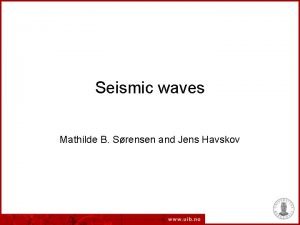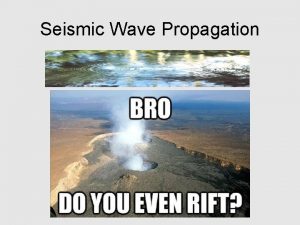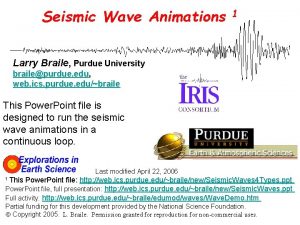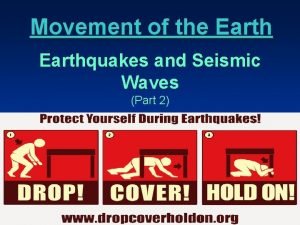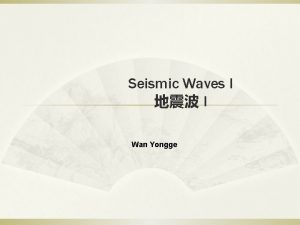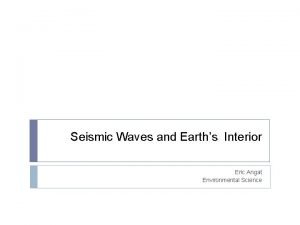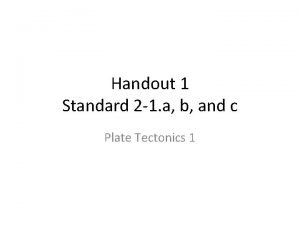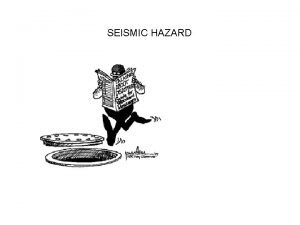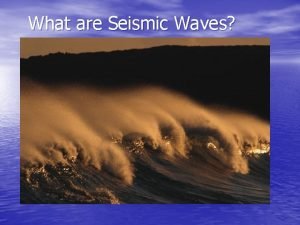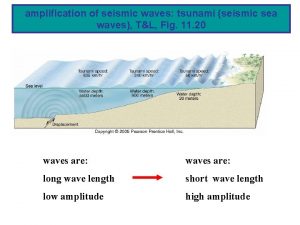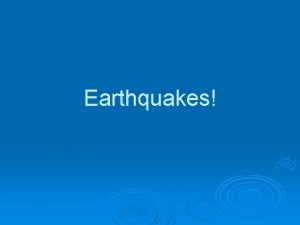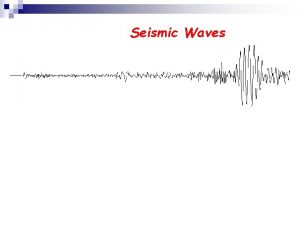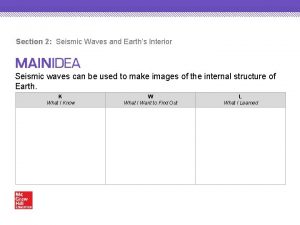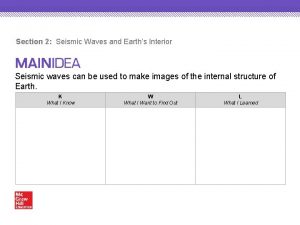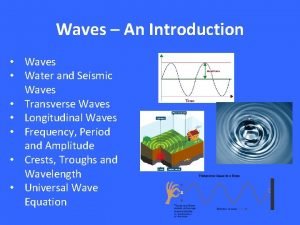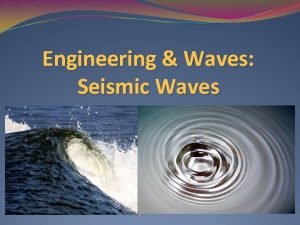Chapter 8 Section 2 Seismic Waves Waves generated












- Slides: 12

Chapter 8 Section 2 Seismic Waves: • Waves generated by an earthquake • Body waves – travel through the interior of the Earth • Surface waves- travel along the surface

P-Waves: • Push/pull waves • Caused by compression and expansion • Travel faster than S waves • Can travel through both solids and liquids

S - Waves: • Shake particles to right angle of direction • Transverse waves • Travel more slowly than P waves • Can travel through solids but NOT liquids

Surface Waves: • Caused when body wave reaches the surface • Travel slower than body waves • Much larger than body waves • Most destructive body waves

Recording Seismic Waves Seismographs: • Measured using a seismograph • Weight suspended from a string • Attached to bedrock

Seismogram: • Record of an earthquake • Shows three types of seismic waves • The stronger the earthquake the larger the waves

Measuring Earthquakes Richter Scale: • Measures the magnitude of an earthquake • Based on height of largest wave • 10 x increase wave height = 1 increase in magnitude • Only useful for small, shallow earthquakes within 500 miles of the epicenter

Moment Magnitude Scale: • Estimates the amount of energy released • Includes seismographic data, average amount of movement along the fault, the area of the surface break and the strength of the broken rock

Modified Mercalli Scale: • Rates intensity • Determined by visible damage

Locating an Earthquake • P-waves and S-waves travel at different speeds • The further the distance the longer the time interval • Use three or more locations to determine the epicenter

Steps to Locating the Epicenter: 1. Measure the time interval between the P & S waves 2. Refer to the Time Interval Graph to determine distance from epicenter 3. Draw a circle on a map locating the distance 4. Use three different seismograph stations to locate the epicenter

 Is a seismic wave mechanical or electromagnetic
Is a seismic wave mechanical or electromagnetic Kesler science properties of waves answer key
Kesler science properties of waves answer key Thereforw
Thereforw What are wavefronts
What are wavefronts Seismic
Seismic Seismic waves animation
Seismic waves animation What are the three types of seismic waves
What are the three types of seismic waves Seismic waves
Seismic waves Wave velocity equation
Wave velocity equation Which type of wave can penetrate the outer and inner core *
Which type of wave can penetrate the outer and inner core * Seismic waves
Seismic waves Earthquake waves
Earthquake waves Four types of seismic waves
Four types of seismic waves


